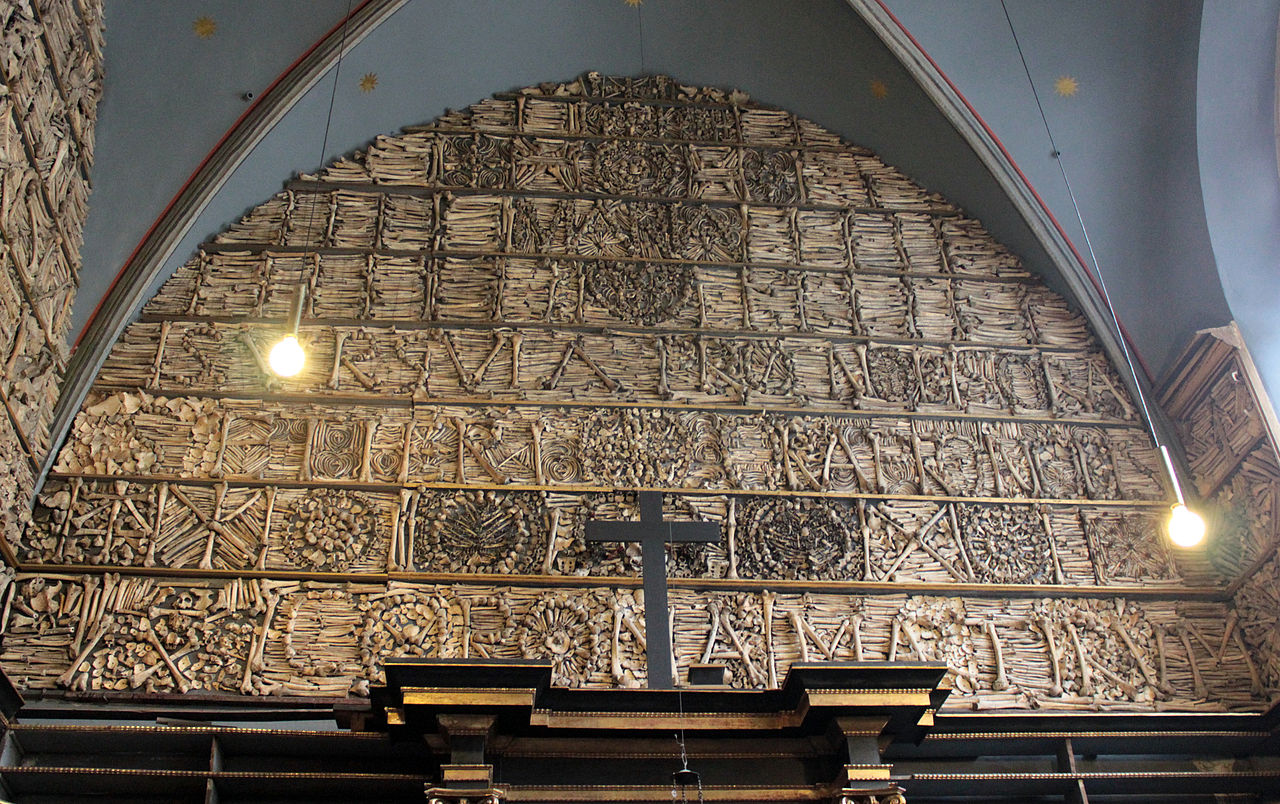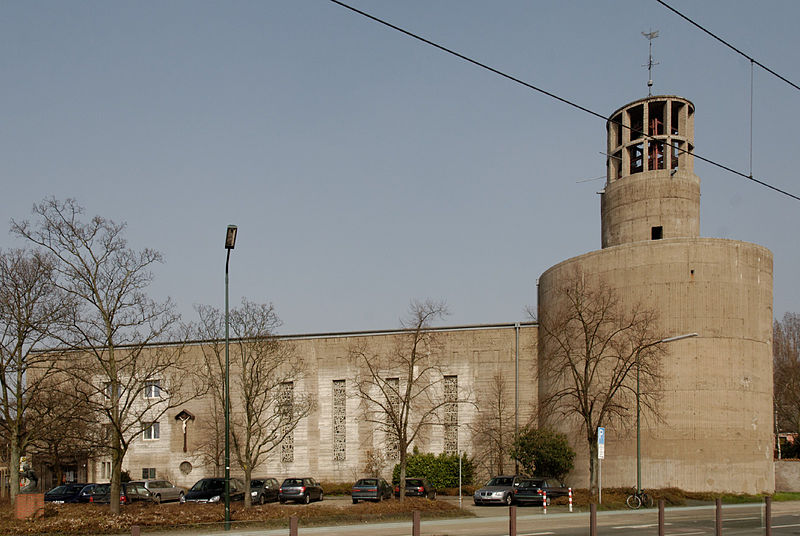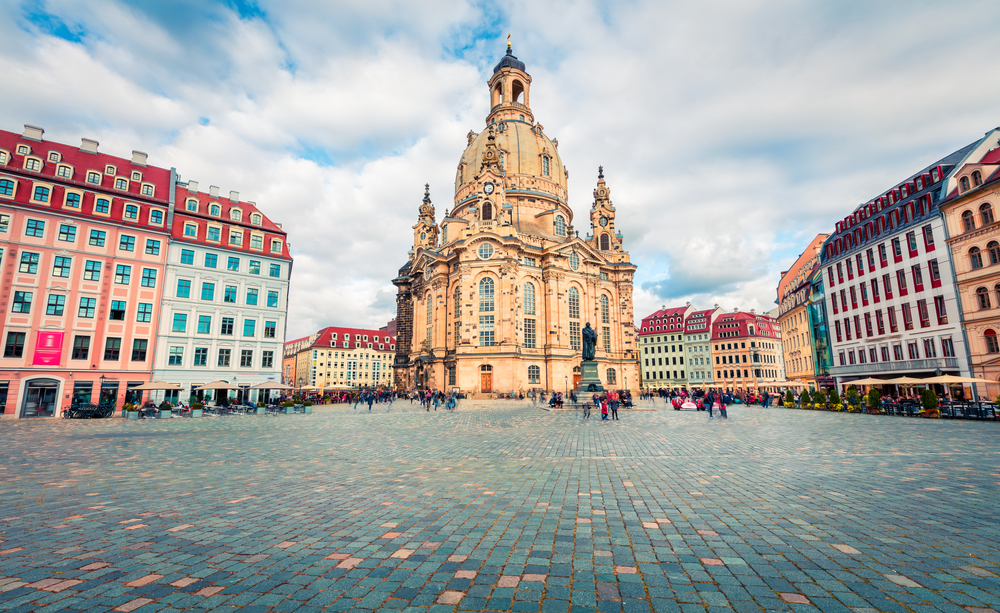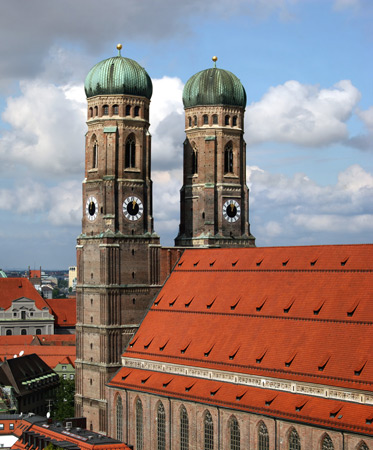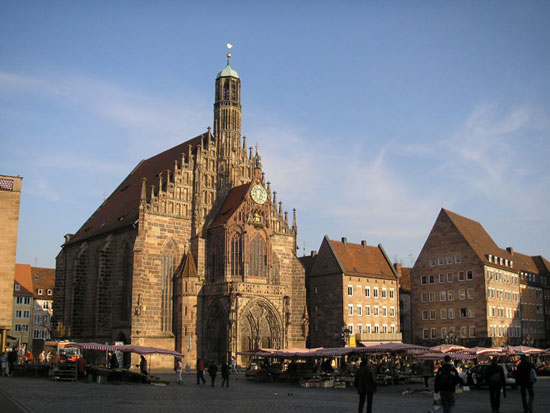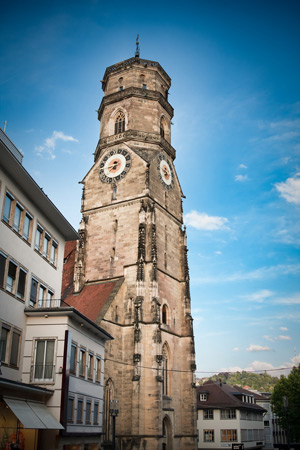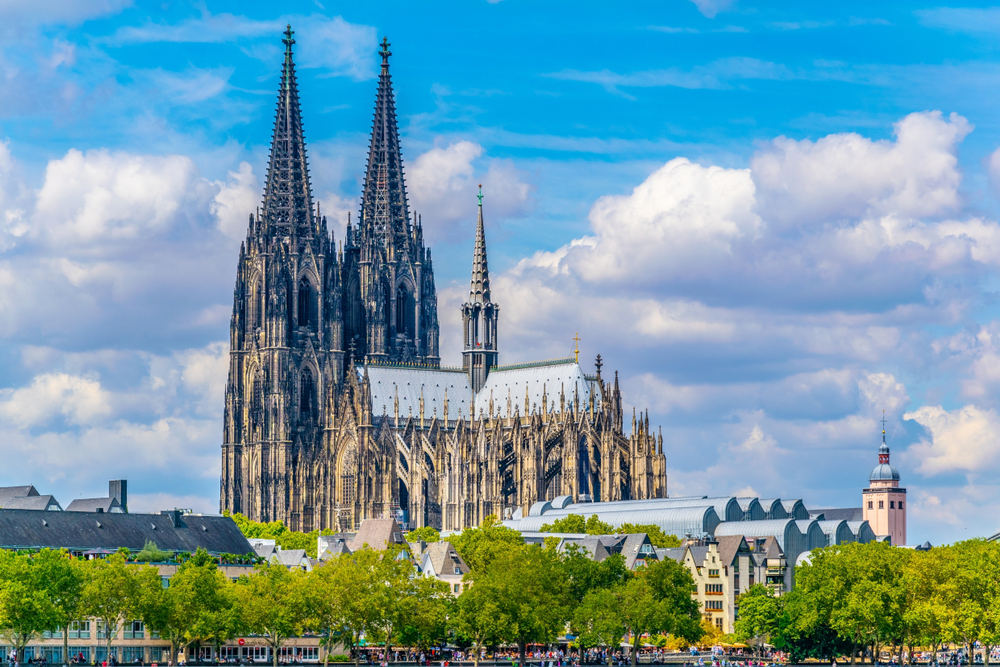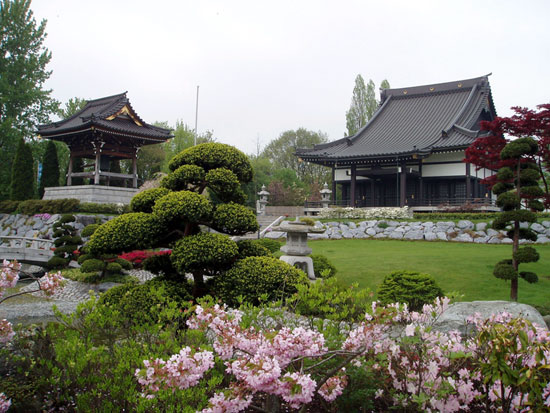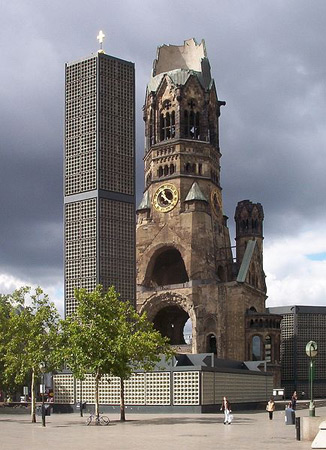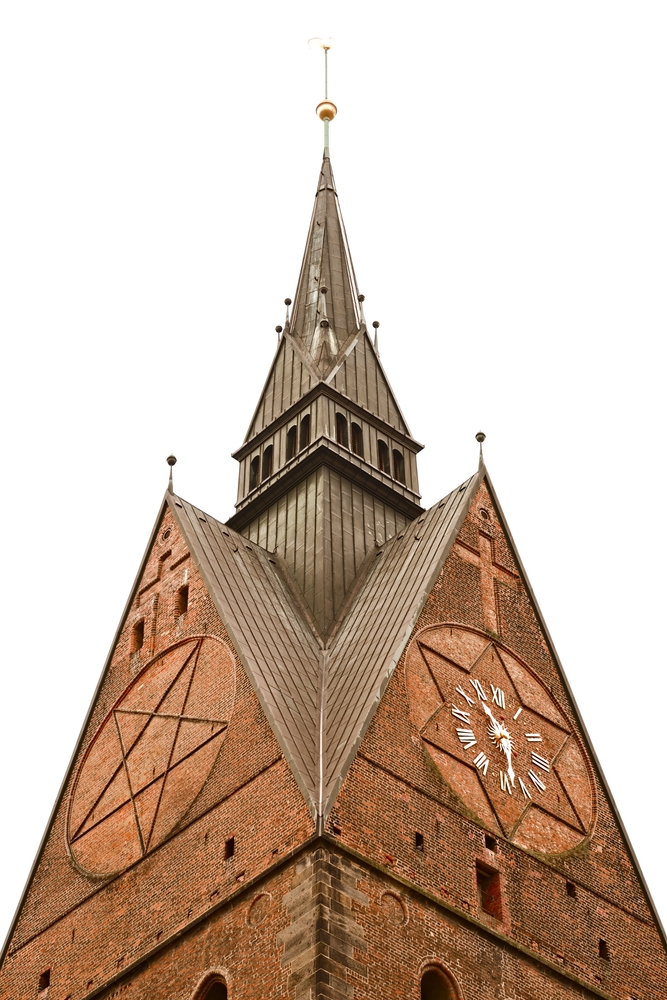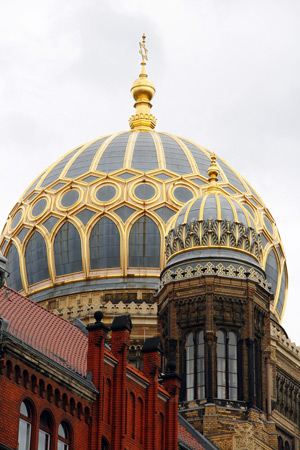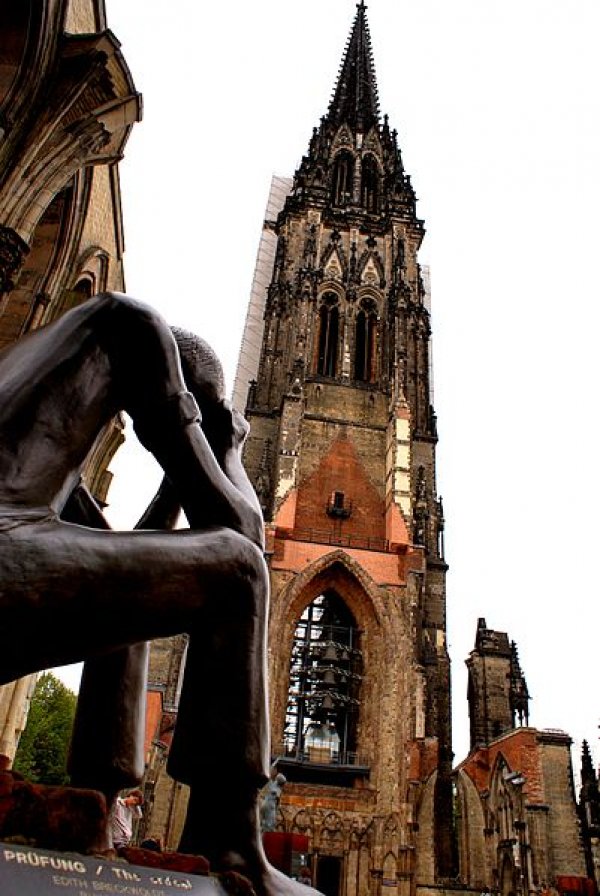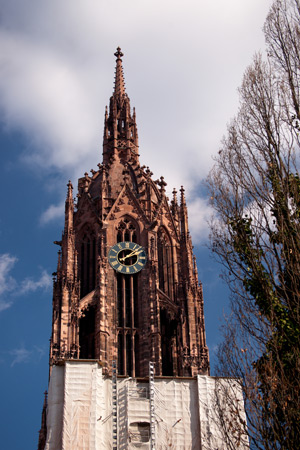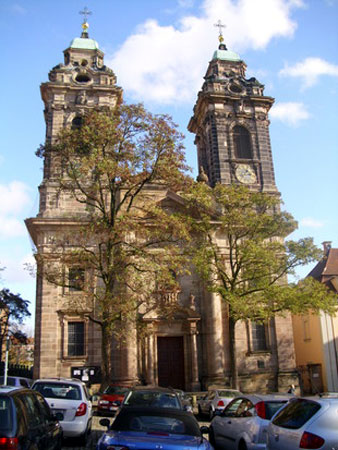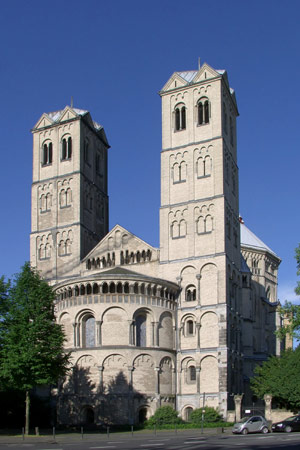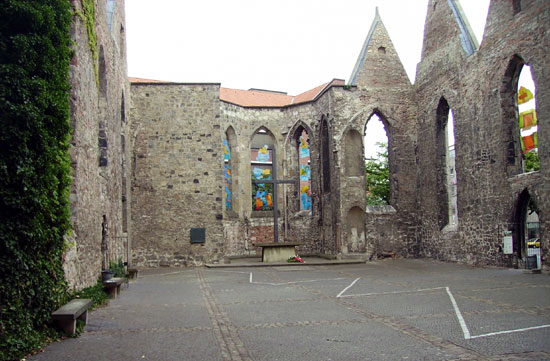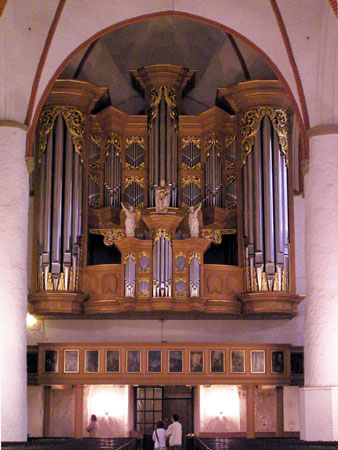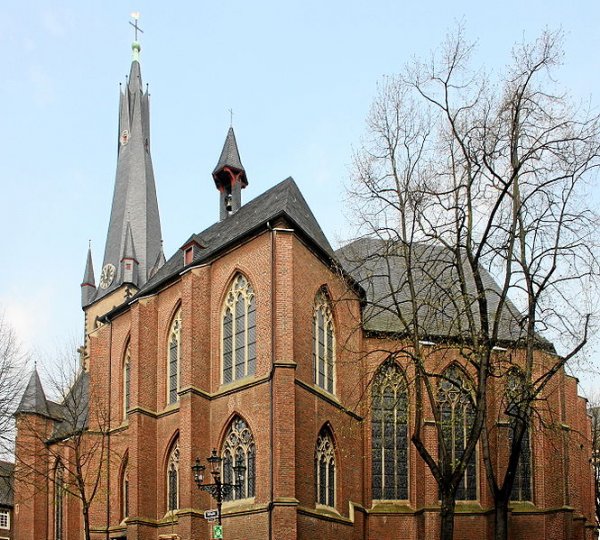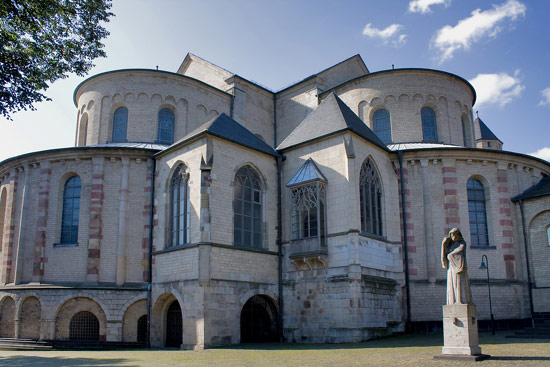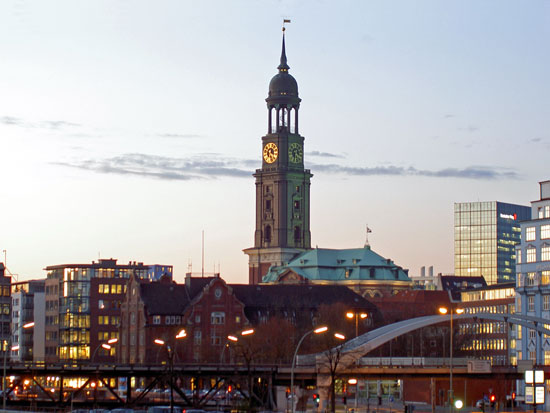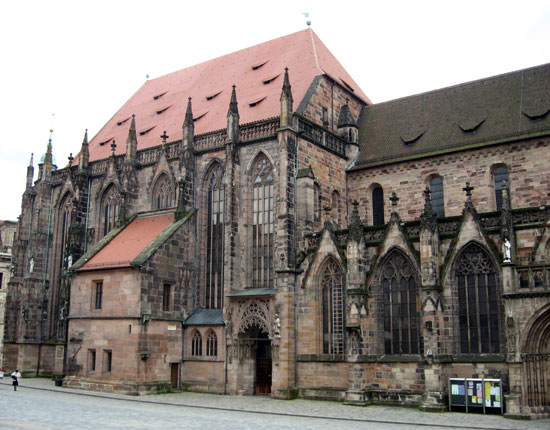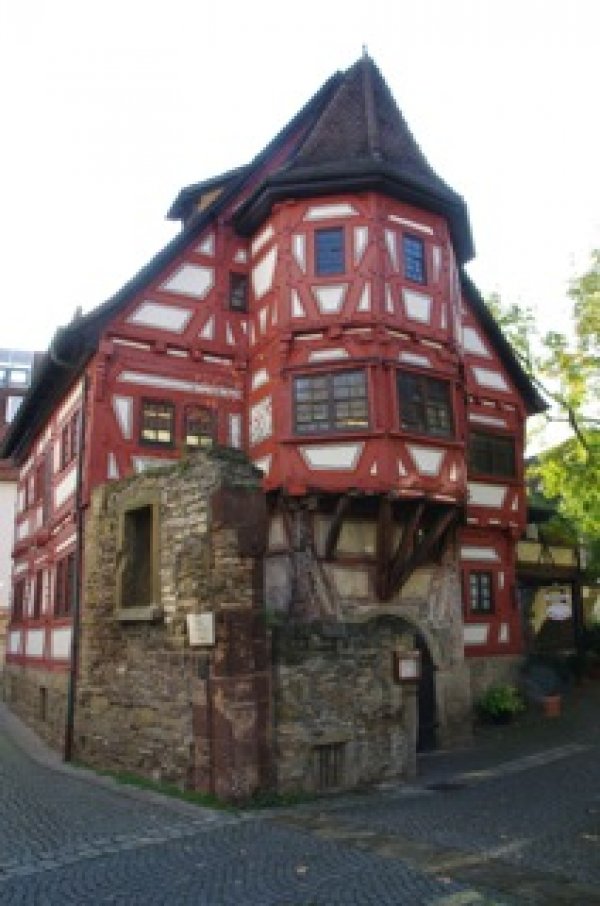Points of Interest
Basilica of St. Ursula
Ursulaplatz 24, Nordstadt
Cologne 50668, Germany
The walls of the Basilica of St. Ursula’s Golden Chamber are covered with ribs, skulls, femurs, and other human bones arranged into shapes and even the phrase “Holy Ursula, Pray For Us.” Built on the ancient ruins of a Roman cemetery, the church is adorned with gold and silver relics, including some crowned skulls. The bones are believed to be those of martyred virgins and Romans.
Berlin Cathedral
Berliner Dom Am Lustgarten 1
Berlin 10178, Germany
Often referred to as the "Protestant St. Peter's," the awe-inspiring Berliner Dom dates back only to 1905; but numerous other churches have previously existed on the site, beginning with the 15th-century St. Erasmus Chapel. The present structure is the largest 20th-century Protestant church in Germany. It incorporates baroque and Italian Renaissance influences. Bombing damage necessitated the late-20th-century restoration of its defining domes and ornate baroque interior. The best place to view the intricate mosaics adorning the dome is from its gallery. Other notable interior artwork includes stained-glass windows and a neo-baroque pulpit. The crypt holds more than 80 tombs of Prussian royalty, including those of Frederick I and his wife Sophie Charlotte.
Bunker Church of Saint Sacrament
Bunkerkirche Sankt Sakrament 270 Heerdter Landstrasse
Düsseldorf 40549, Germany
During World War II the Nazi government took over St. Sacrament Church’s property and built an air raid shelter that resembled a church. After the war ended, the bunker became a functional church; however, the renovations meant blasting through massive 1-meter-thick (3.3-foot-thick) walls and ceilings. In addition, a concrete bell tower was added in 1952 to match the church’s construction. Today, the structure serves as a Coptic Orthodox Church and is commonly referred to as Bunker Church.
Cathedral Church of Our Lady
Frauenkirche 12 Frauenplatz
Munich 80331, Germany
The Catholic cathedral of Frauenkirche, the largest church in the Bavarian capital of Munich, can hold a congregation of 20,000 people. The red brick, late Gothic-style cathedral, built between 1468 and 1488 to replace an older church, was consecrated in 1494. The domes atop its two towers are modeled on the Dome of the Rock in Jerusalem and were added in 1525. The interiors include a collection of 14th to 18th century art works by noted artists, stained-glass windows, and the tomb of Emperor Louis IV. A number of legends surrounding the Devil's Footstep have grown around the black mark resembling a footprint with a small hooked tail at the heel at the entrance to the cathedral.
Cathedral of Our Blessed Lady
Frauenkirche Munich, Germany
The Catholic cathedral of Frauenkirche, the largest church in the Bavarian capital, can hold a congregation of 20,000 people. The red brick, late Gothic-style cathedral, built between 1468 and 1488 to replace an older church, was consecrated in 1494. The domes atop its two towers are modeled on the Dome of the Rock in Jerusalem and were added in 1525. The interiors include a collection of 14th- to 18th-century artworks by noted artists, stained-glass windows, and the tomb of Emperor Louis IV. A number of legends surrounding the "Devil's Footstep" have grown around the black mark resembling a footprint with a small hooked tail at the heel at the entrance to the cathedral.
Church of Our Lady
Frauenkirche 14 Hauptmarkt
Nuremberg, Germany
One of Nuremberg's iconic buildings, the Frauenkirche (Church of Our Lady) has been wowing visitors since it was consecrated in 1358. Even Hitler co-opted it as a historic backdrop for a parade through the city: in Triumph of the Will, he is seen saluting as brown-clad ranks march past the church's gabled front. A tremendous example of German Gothic architecture, the Frauenkirche is built mostly of brick, with an impressive stepped gable at the front. At midday every day, the square outside is filled with visitors, who congregate to see the daily show. The Männleiflaufen is a 16th-century clock with a circular blue face that once a day opens up to reveal seven small figures, which glide out, bow, and then disappear. They represent the seven electors of the Holy Roman Empire, paying homage to Charles IV.
Collegiate Church
Stiftskirche Stiftstrasse 12
Stuttgart, Germany
The oldest and most important place of worship in Stuttgart, the Stiftskirche (Collegiate Church) is also gorgeously designed. Its golden pulpit, Reformation gallery, and sundial clock are regarded as classic features. Its cemetery houses the remains of many a notable citizen of Stuttgart; in fact, every ruler of Württemberg until 1677 is buried there. From its beginnings as a Romanesque chapel a thousand years ago, this church has endured many wars and the ravages of time. Major renovations in the 1950s and early 2000s restored some, but not all, of the detail lost over the years. These days the Stiftskirche serves as the headquarters of the Lutheran-Evangelical Church in the state as well as the parish church for inner-city Stuttgart, which means that you might chance upon a performance by the choir.
Cologne Cathedral
4 Domkloster
Cologne, Germany
The sheer magnitude and distinctive Gothic features of Cologne Cathedral are truly impressive. Dedicated to St. Peter and the Virgin Mary, the architectural wonder was completed in the late 19th century. It is Cologne's most famous landmark and the second-tallest Gothic structure in the world with two towers rising 157 meters (515 feet). The cathedral boasts the largest free-swinging bell in the world, St. Petersglocke (Bell of St. Peter), which weighs nearly 22 metric tons (24 tons). The cathedral's other treasures include the gilded 13th-century Sarcophagus of the Magi, largest reliquary (container for relics) in the Western world, Gero-Kreuz (the oldest cross north of the Alps), and Milan Madonna (Mailänder Madonna), a wooden sculpture dating to 1290.
EKŌ House
EKŌ Haus Brüggener Weg 6 Niederkassel
Düsseldorf, Germany
A large Japanese community—the largest in Europe—helped to make Düsseldorf the logical choice for Europe's first and only Buddhist temple and Japanese garden, named Eko or "Luminous Splendor." The garden grounds are open to the public, and regular events introduce Japanese culture to locals and visitors. A library, nursery, and several publications are in the works, expanding on the already substantial exchange between East and West.
Great St. Martin
Gross St. Martin Martinspförtchen 8
Cologne, Germany
Famous for its trefoil (cloverleaf) choir, this massive Romanesque church south of the cathedral has been completely rebuilt since 1948. During World War II, it was gutted by British bombing raids, its tower destroyed, and its walls reduced to ruins. Over nearly 40 years, the city painstakingly restored Great St. Martin—it opened to worshipers once again in 1985. Originally consecrated in 1172, not long after a fire destroyed much of Cologne, the church was built upon the foundations of old Roman harbor warehouses (as well as on those of a 10th-century Benedictine cloister). Over the following three centuries, it was added to and extended, with towers and turrets. Although built mainly in the Romanesque style, Great St. Martin's verticality—its series of piled geometric forms reaching into the sky above the Altstadt—suggests the Gothic style, which was to become prevalent across Germany.
Kaiser Wilhelm Memorial Church
Breitscheidplatz
Berlin 10789, Germany
The Kaiser Wilhelm Memorial Church is located in the Breitscheidplatz in Berlin. The monumental old church, built between 1891 and 1895 in honor of Wilhelm I by his grandson Emperor Wilhelm II, was a casualty of the bombings of World War II. Franz Schwechten created the neo-Romanesque plan of the church, which included mosaics depicting the life and work of Emperor Wilhelm I. Post-war, a new church featuring a cross made of nails from the old Coventry Cathedral was built on the ruins of the old church and consecrated in 1962. Other treasures of the church are an iconic cross of the Russian Orthodox Church and a graphic known as the Stalingrad Madonna.
Market Church
Marktkirche 2 Hanns-Lilje-Platz
30159 Hannover, Germany
Adorning the western tower of Hannover’s Market Church is a giant pentagram. The ancient symbol of epiphany was first used by Teutonic pagans before being adopted by Christians as their own symbol at the time the church was built during the 14th century. An example of Germany’s brick gothic architecture, the place of worship also has a grand organ.
New Synagogue
Neue Synagoge Oranienburger Straße 28–30
Berlin 10117, Germany
Though the original 1859 structure was largely destroyed by Allied bombing, the Neue Synagoge was restored in 1995, with glorious results. At the time of its consecration in 1886, the synagogue was large enough to seat 3,200 worshippers. Today it is entirely too vast for Berlin's remaining Jewish population and serves primarily as museum chronicling the synagogue's past and featuring temporary exhibits on the history of Berlin's Jewish community. Fragments of the original building and remnants of its interior fittings are also on display. The most impressive element of this monument, however, is its exterior. The synagogue's exotic gilded domes, based on the Moorish architecture of the Alhambra in Grenada, Spain, are some of Berlin's most spectacular.
Old Saint Nicholas' Church
Alte St. Nikolaikirche Willy-Brandt-Straße 60
Hamburg, Germany
Like most of Hamburg's churches and other important buildings, Alte St. Nikolaikirche was nearly obliterated during World War II. All that was spared of this 19th-century neo-Gothic church were its tower and spire, once the tallest structure in the world at 441 feet. Today the remnants of this church serve as a reminder of all those who were persecuted or lost their lives in the bloodiest battle of the 20th century. Like the tower at St. Michael's, the Old Saint Nicholas' tower affords visitors fantastic views of the surrounding area, including the Speicherstadt, or Warehouse City. Since 2005, an elevator takes guests to the top several times daily. Next to the tower, a local citizens' organization runs a small museum that showcases the history of the church.
St. Bartholomew's Cathedral
Domplatz 14
Frankfurt, Germany
Not actually a cathedral in the strict sense of the word (it was never a bishop's church), St. Bartholomew's acquired the designation when the coronation ceremonies for Holy Roman Emperors moved there in 1562. Don't miss the Elector's Chapel, where the kings were elected from 1356 onward. The cathedral was badly damaged in an 1867 fire, and the neo-Gothic restoration that followed was literally capped when the west tower received its spire, which had been part of the original plans when the tower was built in 1415. The tower's 324 steps can be climbed from April to October; those who venture upward are rewarded with breathtaking panoramic view of the city. The cathedral's museum also is worth a look; it has exhibits full of artifacts that date back to the Middle Ages.
St. Egidien Church
Sankt Egidien Kirche Burgstraße 1-3
Nuremberg, Germany
This 18th-century structure with its Greek portico and its pair of square corner towers, is an architectural palimpsest, containing vestiges of earlier churches. Although it is the only surviving baroque church in Nuremberg, it also holds elements of the Romanesque Benedictine church, which burned down (along with most of the city's grand buildings) in the great conflagration of 1696. Constructed in 1718 in the midst of the upper-class Egidien neighborhood, the Egidienkirche contains several chapels, the oldest of which is still open today. Tour the Wolfgangkapelle, the Tetzelkapelle (a gift from the Tetzel family), but leave the Euchariuskapelle until last-the venerable chapel dates back to the 13th century. Despite the blackened stones of its façade, this Protestant church remains fully functional today.
St. Gereon's Basilica
Gereonskloster 2
Cologne, Germany
Of the 12 celebrated Romanesque churches in Cologne, none earns such comparisons as the Altstadt's geometrically unique St. Gereon. Likened to Hagia Sofia in Istanbul, it's based around a decagonal base which still features Roman masonry, appropriate stonework in a house of worship dedicated to a fourth-century Roman legionnaire martyred for his refusal to honor pagan gods. The 10-sided basilica was begun in the fourth century, supposedly over the graves of Gereon and his Christian comrades. Inside the church, in a niche on the north side, look out for the Blutsaüle, the Blood Column which was once spattered with the sacred blood of the martyred soldier. The central basilica, begun during the rule of Constantine, was augmented through the 11th, 12th, and 13th centuries, notably with two massive square towers. Other interior highlights include Romanesque floor mosaics, the martyrs' tombs, stained glass windows, and the red-painted dome ceiling.
St. Giles' Church
Aegidienkirche
Aegidientorplatz 1
Hannover
Germany
There are no services at this church, nor worshipers. But once a year, at 8:15 a.m. on August 6, a bell tolls to commemorate those who died in Hiroshima, Hannover's Japanese sister city. Both towns suffered in World War II: Hiroshima became synonymous with the atomic bomb, the modern world's most terrifying military threat, while Hannover was gutted by the fires caused by Allied aircraft. St. Giles' Church, an empty shell since a bombing raid in 1943, has been left as a memorial to the victims of war. On this central city site, churches have stood for more than a thousand years. Beneath the 14th-century Gothic walls and eerily roofless gables was a Roman basilica. Underneath that lie the remains of chapels dating back to the 12th, and even the 10th, centuries. Within the church walls, visitors can see sculptures, as well as the Peace Bell, given to Hannover by Hiroshima in 1985.
St. James' Church
St. Jacobikirche Hamburg, Germany
One of five primary Lutheran churches in the city, St. Jacobi is hidden off one of Hamburg's main promenades, the Mönckebergstraße. This unassuming yet important church features a 375-foot tower outside and, inside, the largest baroque organ in Europe. The famous Arp Schnitger organ, complete with 60 registers and 4,000 pipes, was built in 1693 and restored in the early 1990s. The organ was made all the more famous when Bach worked his magic on the keys in 1720. Its sounds resonate through central Hamburg every Sunday morning. The church itself was built in the 13th century but was nearly destroyed during World War II. Don't miss wandering the interior of this charmer, not only for its organ but for its three Gothic altars, all built in the 1500s.
St. Lambertus Basilica
Lambertus Kirche Stiftsplatz Altstadt
Düsseldorf, Germany
This beautiful church is an architectural gem of the Altstadt and a site of vast historical importance. It holds relics of Saint Apollinaris, Düsseldorf's patron saint. The twisted tower of the church has made it famous among tourists who enjoy visiting Europe's old ecclesiastical buildings. Whimsical legend has it that the first virgin (tourist or not) to stand before the tower will straighten it.
St. Mary's In The Capitol
St. Maria im Kapitol Cologne, Germany
The largest of Cologne's Romanesque churches, this 11th-century Catholic house of worship is an intriguing amalgam of architectural features. Constructed on the site of a first-century Roman temple, St. Maria is reputedly based on the floor plan of Bethlehem's Church of the Nativity. The borrowed design, featuring a cloverleaf choir, was the brainchild of Abbess Ida, granddaughter of Holy Roman Emperor Otto II. Nor was Ida content with raiding the east for ideas. She also copied the gallery design from the imperial palace chapel at Aachen. As you approach the church from the river (the eastern end), look out for the arching strips near the top of the choir walls. They're known as "Lombard bands," and they became popular in northern Italy, another architectural addition to the Abbess's diverse church. The interior is just as interesting, featuring works including a pair of intricately carved 11th-century wooden doors.
St. Michael's Church
St. Michaeliskirche Englische Planke
Hamburg, Germany
Known locally as simply "The Michael," St. Michaeliskirche is one of Germany's finest baroque churches and Hamburg's primary place of worship. This church was originally built in the mid-17th century but was torn apart by lightning and required rebuilding in the 18th century. It suffered a similar fate in the fires of 1906. Unfortunately, the third time was not a charm when the building again all but met its demise during World War II. A resplendent reconstruction of the last church today stands with its imposing clock tower affording visitors breathtaking views of the Elbe River, Alster Lakes, and a panorama of the city. Twice daily, at 10 a.m. and 9 p.m., a trumpeter emerges from the tower platform to perform a solo act for the crowd.
St. Paul's Church
Paulskirche Paulsplatz 11
Frankfurt, Germany
This structure holds a special place in Germany as the meeting place of the first all-German Parliament in 1848, which crafted the country's first democratic constitution. Originally consecrated in 1833 as Frankfurt's main Evangelical Lutheran Church, it was destroyed by the Allied bombardment of the city in World War II. Because of its significant place in German history, it was the first major reconstruction job undertaken in Frankfurt after the war, and the church was consecrated again in 1948 as part of a centennial celebration of the German National Assembly. Since then it has been the home of cultural events and exhibits, including a permanent one depicting the various developmental stages of German unity and democracy. The church basement features a large mural depicting the original Parliament's representatives entering St. Paul's in 1848.
St. Sebald's Church
St. Sebald Kirche Albrecht-Dürer-Platz 1
Nuremberg, Germany
It's hard to see where one wall ends and another begins, but the architectural styles are unmistakable for visitors at St. Sebald's. Walk down the nave and you'll see Romanesque detailing, from the arches to the roof. Then move through to the east choir, and it all turns Gothic. First consecrated in 1273, the church is saturated with beautiful art, from the Sebald Chörlein (the Oriel window which juts out of the exterior wall) to the saint's shrine, cased in a 1519 brass structure created by Peter Vischer. Do not miss the crucifix by Veit Stoss. This Nuremberg craftsman, whose magical work with wood earned him commissions from kings and emperors, was forbidden from leaving the city, and was later branded when he accepted work elsewhere. Who was Sebald? A hermit who lived nearby, and who received papal support for his preaching.
The Little Monastery
Klosterle Marktstraße 71 Bad Cannstatt
Stuttgart, Germany
This medieval monastery is the oldest structure in Stuttgart and a beautifully restored example of Gothic architecture. It was built in 1463 by the Beguines, a Roman Catholic sect known for its charitable goodwill. Today, it houses an upscale restaurant, Weinstube Klosterle, which serves gourmet spins on Swabian cuisine. The charming little museum inside relates the history of the Bad Cannstatt district from the Ice Age through to its importance as a spa town. The Klosterle is situated on one side of the elegant Wilhelms-Brücke (Wilhelm's Bridge), an attractive sight in its own right.
Westend Synagogue
Freiherr vom Stein Straße 30
Frankfurt, Germany
By virtue of its being the only synagogue in the city to survive World War II, the Westend Synagogue is the oldest surviving shul for Frankfurt's Jewish community. It was first built in the early 1900s, and was spared on Kristallnacht (The Night of Broken Glass, a Nazi anti-Jewish pogrom) in November 1938 because of fears that adjacent buildings used by Nazi Party members might be destroyed. A combination of Art Nouveau and Art Deco styles, in its early years the synagogue was the center of the Jewish community in the Westend district. At the time its congregation was part of what was known as the Liberal movement in Germany, which eventually became today's Reform movement. However, today it has an Orthodox congregation mostly made up of Russian and Polish immigrants who arrived after the dissolution of the Soviet bloc.
Copyright © 1993—2025 World Trade Press. All rights reserved.

 Germany
Germany 